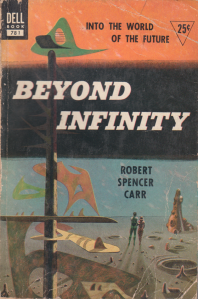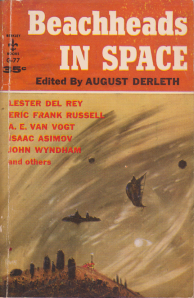The Book: “There is No Defense” by Theodore Sturgeon. Originally published by Astounding Science Fiction in February, 1948, the edition read was in 3 in 1: Three Science-Fiction Novels, (by which they mean somewhat longer short stories) edited by Leo Margulies, published by Pyramid Books (F-899) in 1963.

The Setting: Space, sometime in the future.
The Story: An unknown ship enters the solar system. Big, dark, scary, and it kills everything that attacks or scans it. Nothing seems to hurt it. A coalition of governments from Earth, Mars, and Jupiter, decide to use their ultimate weapon on it (a weapon long outlawed because of its effectiveness). But that doesn’t really work. Blah blah blah, political intrigue, cross species suspicion, and the whole thing wraps itself up tidily.
The Science: The solar system fights the invader with what they call The Death. The Death is an ultimate weapon which destroys life and from which There Is No Defense… Anyway, it works by focusing a very powerful and random vibration on an enemy. This vibration then breaks down all organic matter and spins out into space. Can a vibration be so strong that it breaks down life at the cellular level? Uh, maybe. Personally, I feel vibration strongly – at a loud concert, I can feel it in my core. Extrapolated, I think it could do serious harm. So this seems plausible. Also, kudos to Sturgeon for creating good sounding explanations of many of the scientific elements of this story.
The Reaction: Not a fan of this story. Didn’t hate it, but wouldn’t mind never reading it again. I can’t put my finger on exactly why, because I appreciated some items, like Sturgeon’s science-y bits. But overall, it just didn’t come together for me. Hard not to read this story without thinking about it in a post WWII context.
The Cover: Cover art by EMSH. This cover is pretty cool. We’ve got three different species all trying to fix a space thing, and they’re all in specialized spacesuits. Different from a lot of other cover art I’ve seen and I like it.
Next Up: “West Wind” by Murray Leinster.







